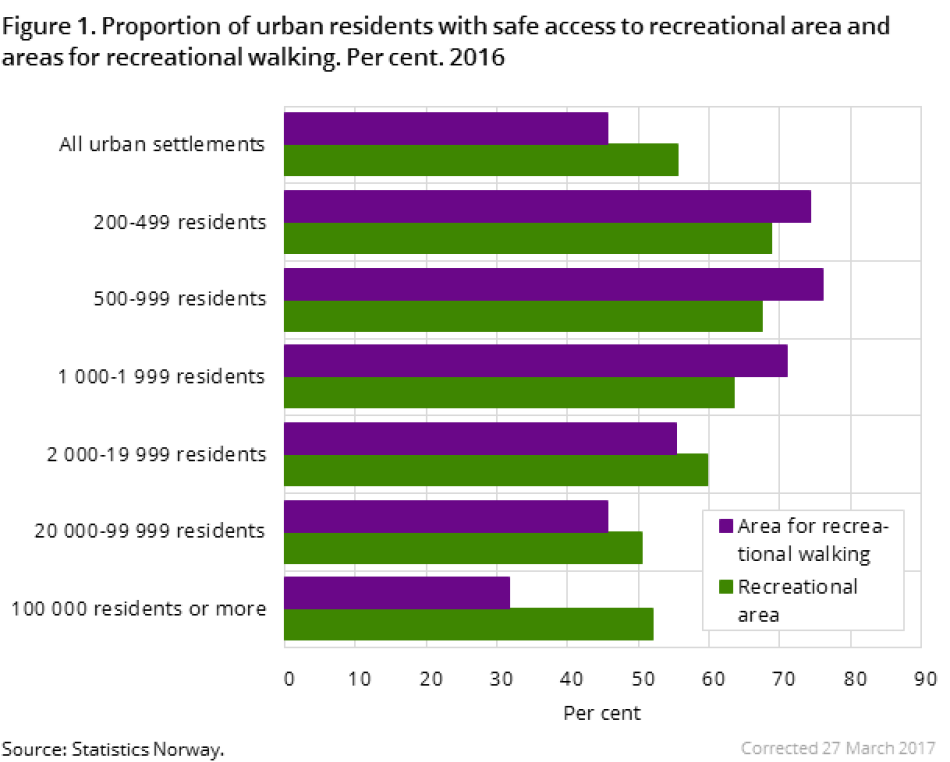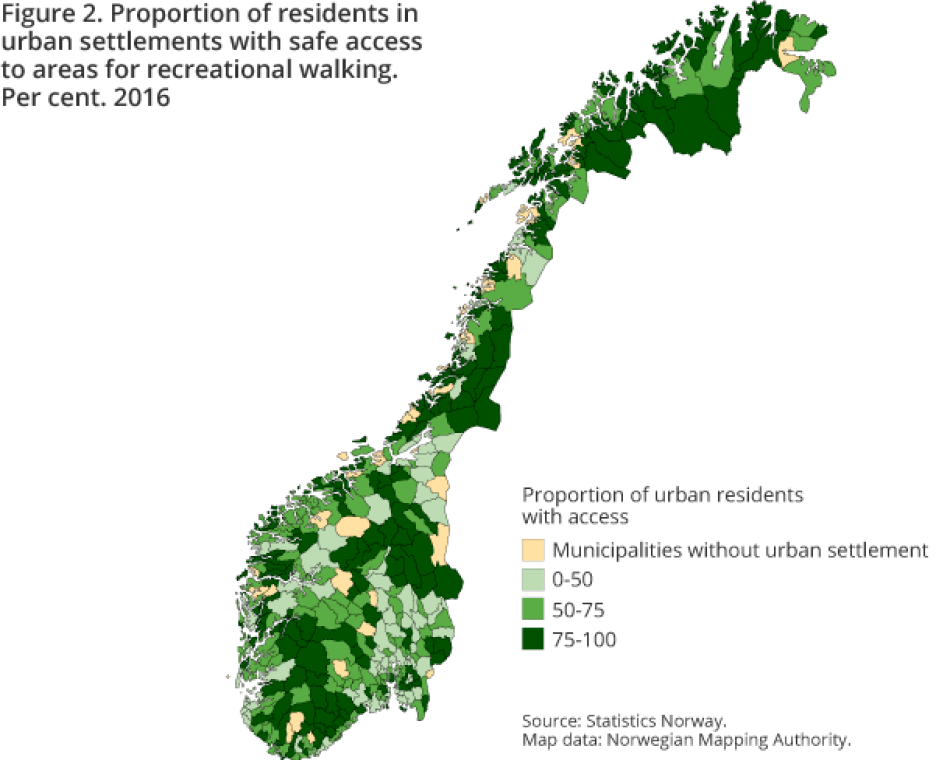More people have access to recreational areas
Published:
Updated:
More than half of Norwegians living in urban settlements have safe access to recreational areas from their dwellings. The share is even larger among Norwegian children and young people.
- Full set of figures
- Recreational areas and areas for recreational walking
Fifty-six1 per cent of Norwegians living in urban settlements have safe access to recreational areas in walking or cycling distance from their dwellings. Forty-six1 per cent have access to areas for recreational walking.

Residents in small urban settlements have more access to recreational areas than residents in larger urban settlements. In the smallest urban settlements, with 200 – 499 residents, an average of 69 per cent1 of the residents have safe access to recreational areas. The corresponding number for the largest cities, with more than 100 000 residents, is 52 per cent1. This difference is even bigger for areas for recreational walking, with 74 per cent1 of the people having access in the smallest urban settlements and only 32 per cent1 in the largest.
Even though there is a clear connection between the size of urban settlements and safe access in general, some small urban settlements show a lower proportion of residents with safe access. This is especially the case in areas with widespread agricultural land, which is not considered to be recreational area or area for recreational walking.

More children have access
A larger share of children and young people has access to recreational areas and areas for recreational walking than the population at large. This is because children tend to live closer to recreational areas serviced by footpaths and cycle paths and other low traffic roads.
Kindergartens have more safe access than schools
The share of kindergartens that has safe access to recreational areas is higher than for schools. Blocks of flats have clearly less access than other building types. This can be attributed to these buildings being predominantly located in central, more dense parts of cities and with more traffic, where recreational areas might be far away.
1 The figure was corrected 30 March 2017.
Contact
-
Kirsten Elisabeth Holz
-
Erik Engelien
-
Trine Haagensen
-
Jørn Kristian Undelstvedt
-
Statistics Norway's Information Centre
